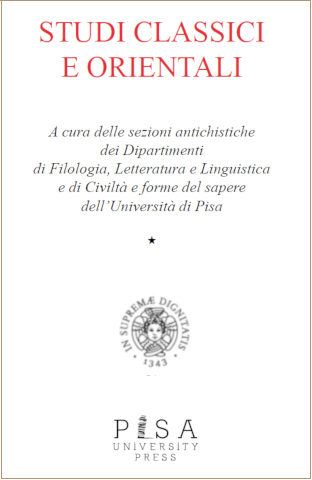Building identities: breaks and continuity in construction practices at the Late Bronze Age settlement of the ‘Serraglio’ on Kos
Parole chiave:
Built environment and cultural identity, Minoan and Mycenaean Kos, Late Bronze Age Aegean and the Ahhiyawa question, Societal change and political transformations, Archaeological theoryAbstract
In this contribution, we examine changes in the construction methods and structural orientation of the built environment at the prehistoric settlement of the ‘Serraglio’ on Kos. In so doing, our aim is to understand shifts in occupation, cultural interactions, and identities at the site during the Late Bronze Age. As a human product embedded with meanings, we see the Koan built environment as the outcome of societal ideas, beliefs, and needs, which eventually reflect the socio-political
strategies of the local elites. During the Late Bronze Age, the ‘Serraglio’ was progressively transformed by complex processes of cultural fusion that are also visible in other aspects of Koan material culture. Through these processes, local, Minoan, and Mycenaean diacritics were continuously recombined to express cultural and political change. Shifts identified in structural orientation at the ‘Serraglio’ during the Palatial phases of Mycenaean civilization indicate the active choice of
the Koan community to mark a difference from the past. At the same time, consistency in construction techniques suggests the expression of a distinct Koan Mycenaean identity at the site. Our research, which relies largely on the archaeological excavations carried out on Kos between 1935 and 1946 by Luigi Morricone, demonstrates that advances in our understanding of Aegean Bronze Age cultural trajectories can be achieved through the analysis of legacy data, despite their limitations relative to modern standards.


